Investigating post-glacial politics: a fieldwork journey
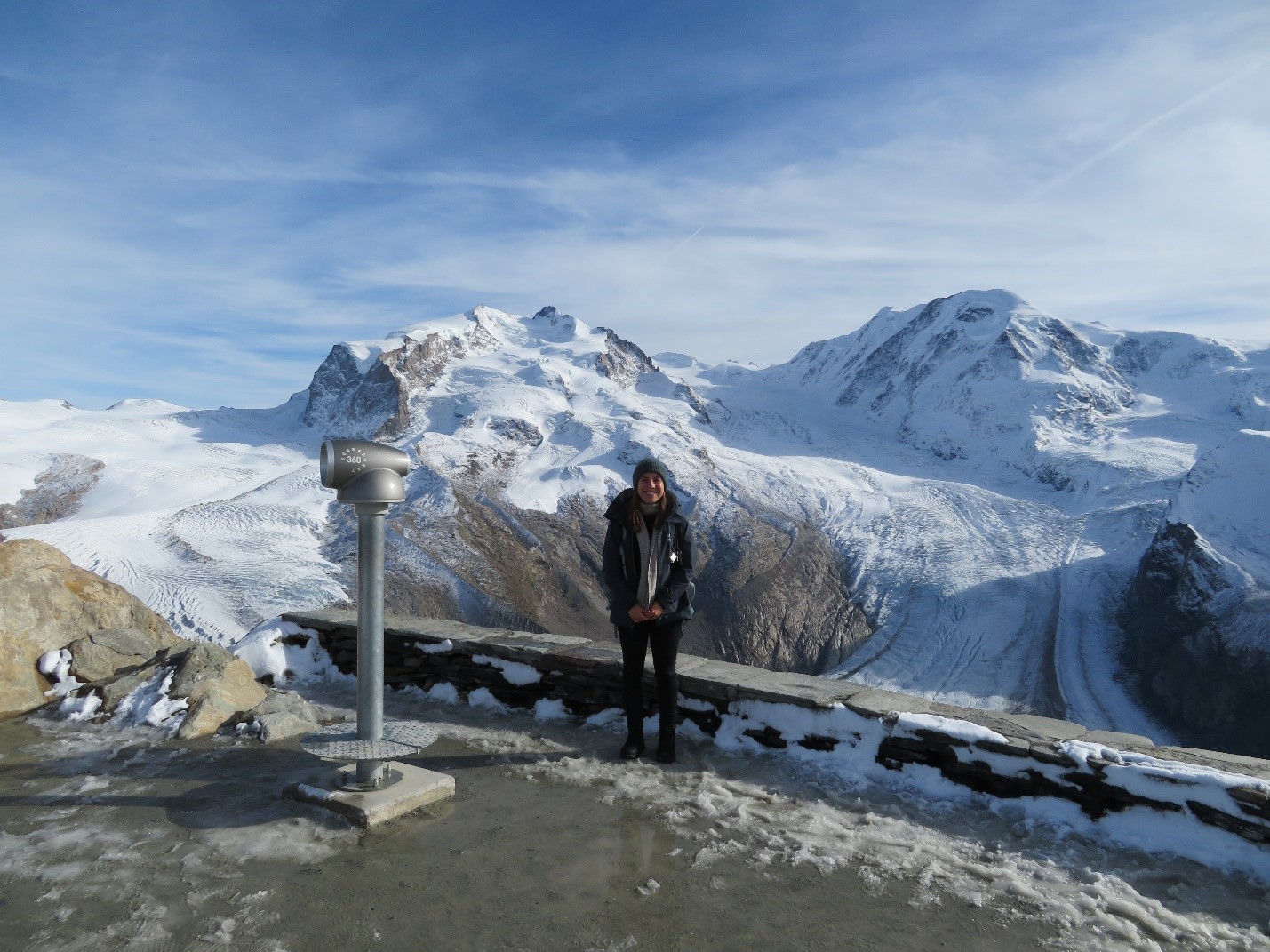
Chloé Baruffa is a PhD candidate in political sciences and climate governance at the GEDT working under the supervision of Prof. Jörg Balsiger. After conducting a 10-month fieldwork for her research on post-glacial politics in the Swiss alps, she shares her experience and insights.
What comes after ice?
What happens once glaciers melt and eventually disappear? Surprisingly, while glaciers are an icon of human induced global warming, this question is seldom asked. Generally, researchers, politicians, and civil society organization discuss the alarming consequences of glacier retreat on downstream water availability. However, few people wonder about the changes occurring in upstream post-glacial areas on the lands and water bodies which form in areas once covered by ice. What comes after ice? And what should we (not) do about newly deglaciated areas?
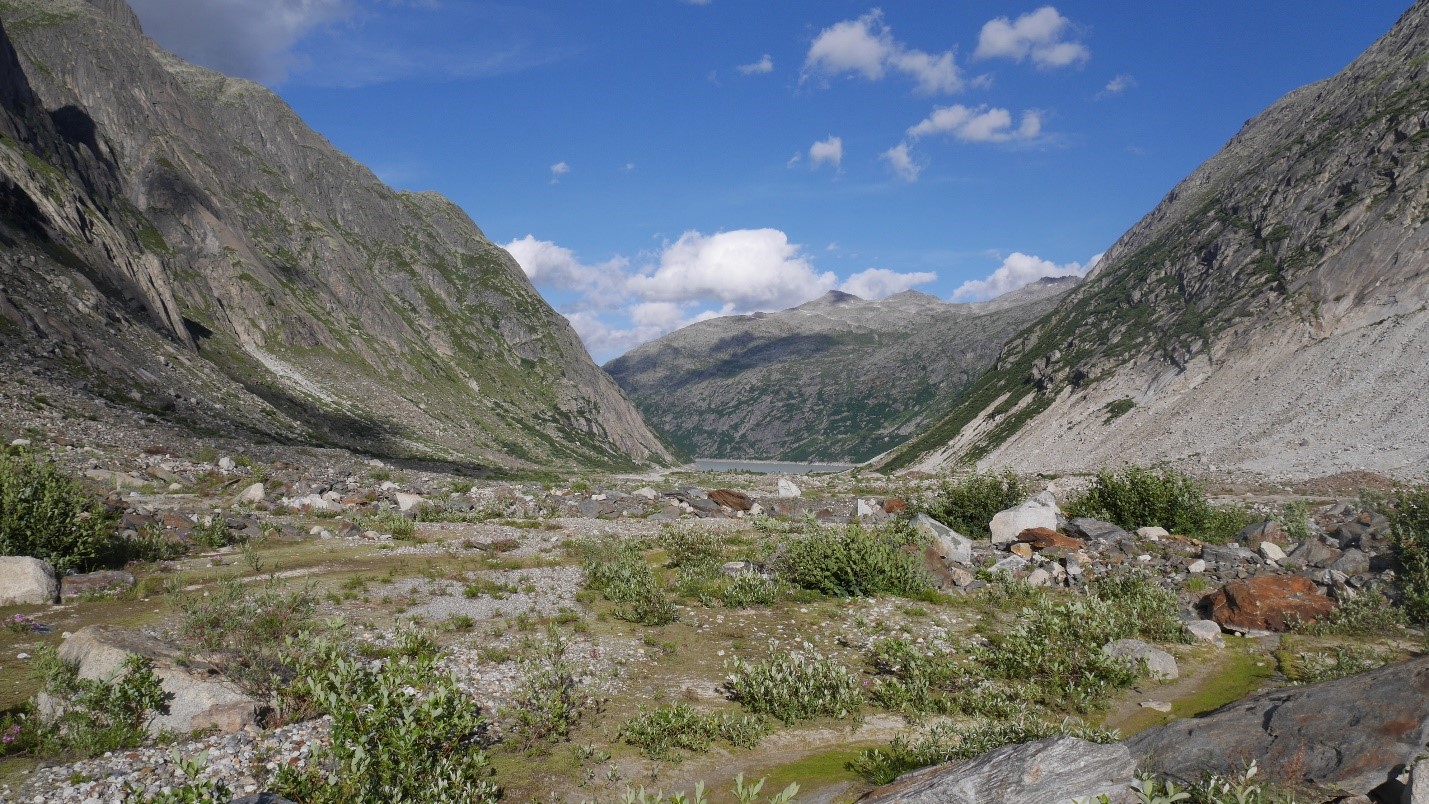
Example of a post-glacial area situated below the Grimsel glacier (Canton Bern). For some, post-glacial areas are valuable ecosystems in the making characterized by unique biological and geomorphological dynamics (Image ource: author)
The tip of the iceberg
I became interested in the issue of post-glacial politics by reading an article entitled “New lakes in deglaciating high-mountain regions – opportunities and risks” as I was starting my PhD at the Institute of Environmental Science of the University of Geneva in 2019. After struggling for a few months to find a topic for my PhD research, this was one of those “Aha!” moments – I had heard of the concept but was starting to wonder if this wasn’t an orchestrated myth to keep young scientists motivated.
This article did not particularly strike me for what it pointed out – which was a very fine identification of potential issues surrounding the formation of new glacial lakes in the Swiss Alps ranging from natural risks, hydropower potential, to tourism – but rather for what it did not say. While the authors highlighted the need to have “an open public discourse and participative planning” on the topic to “help avoid unintended conflicts and adverse effects” I was left with the strong intuition that these “new” spaces must have already started to spark interests and reflections on their future usage.
From my readings on the politics of climate adaptation, I knew that the development of solutions to address climate induced changes are political processes opposing different actors and institutions, representations of the issue at stake, and imaginaries of the future.
So I decided to open the black box of post-glacial Swiss politics.
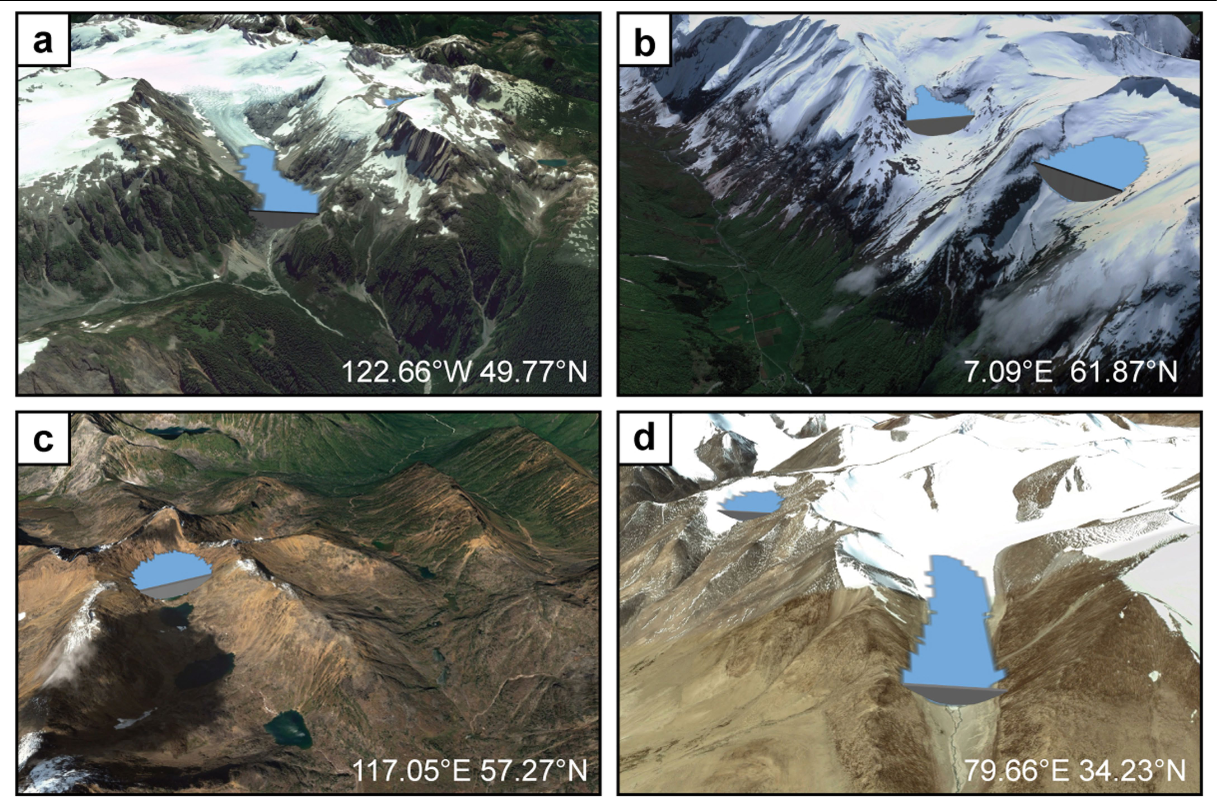
Visualization of potential dams and reservoirs on future glacier-fed basins. For some, post-glacial areas could be used to build multipurpose reservoirs to store energy and drinking water (Creators and image source: Farinotti, Daniel, Vanessa Round, Matthias Huss, Loris Compagno, and Harry Zekollari. 2019. “Large Hydropower and Water-Storage Potential in Future Glacier-Free Basins.” Nature 575 (7782): 341–44.
On the ice edge
I started to prepare my fieldwork upon submitting a written proposal of my research project. Despite the efforts of my supervisor, I struggled to develop a strong theoretical framework before starting my interviews. If my numerous readings on the policy process, adaptation studies, and science and technology studies eventually gave me the necessary conceptual tools to make sense of “what was going on” on the field, I also realized that I preferred adopting an inducto-deductive approach.
It took me a few months to prepare for my fieldwork. During this time I participated in e-meetings, conducted desk research on my topic, identified key actors involved in the reflection over the future of post-glacial areas, built a budget and applied to several funding opportunities.
In the end, I was able to carry out a 10 months fieldwork thanks to the support of the Environmental Governance and Territorial Development Group (GEDT), the Fondation Ernst and Lucie Schmidheiny, and the Fonds William Rappart of the Faculté des Sciences de la Société.
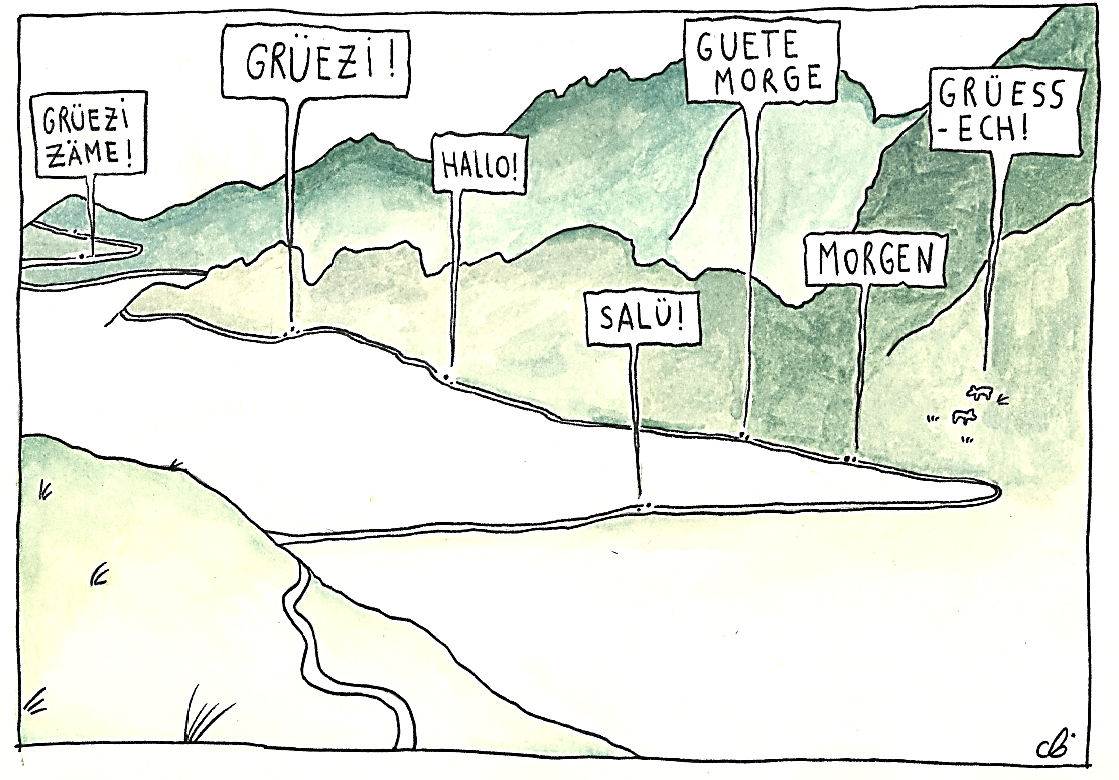
Another important part of my fieldwork preparations was to learn German – which would prove to be challenging but absolutely necessary to read documents, conduct a few interviews, and follow events (Image source: author)
Diving in
Over the course of 10 months (March – December 2022), I conducted 60 in depth semi-structured interviews with policy makers, environmental organizations, scientists, hydropower companies both at the national and cantonal level. In the course of these interviews I met incredible people who were patient enough to answer my questions, explain their activities and views on deglaciating areas. Some of them accepted to speak in their non-native language while others bared with my broken Hochdeutsche – currently in the process of transcribing these interviews I can only sympathize with them. These meetings also allowed me to have access to valuable documents, discuss my early observations and findings, as well as to get recommendations for further interviews.
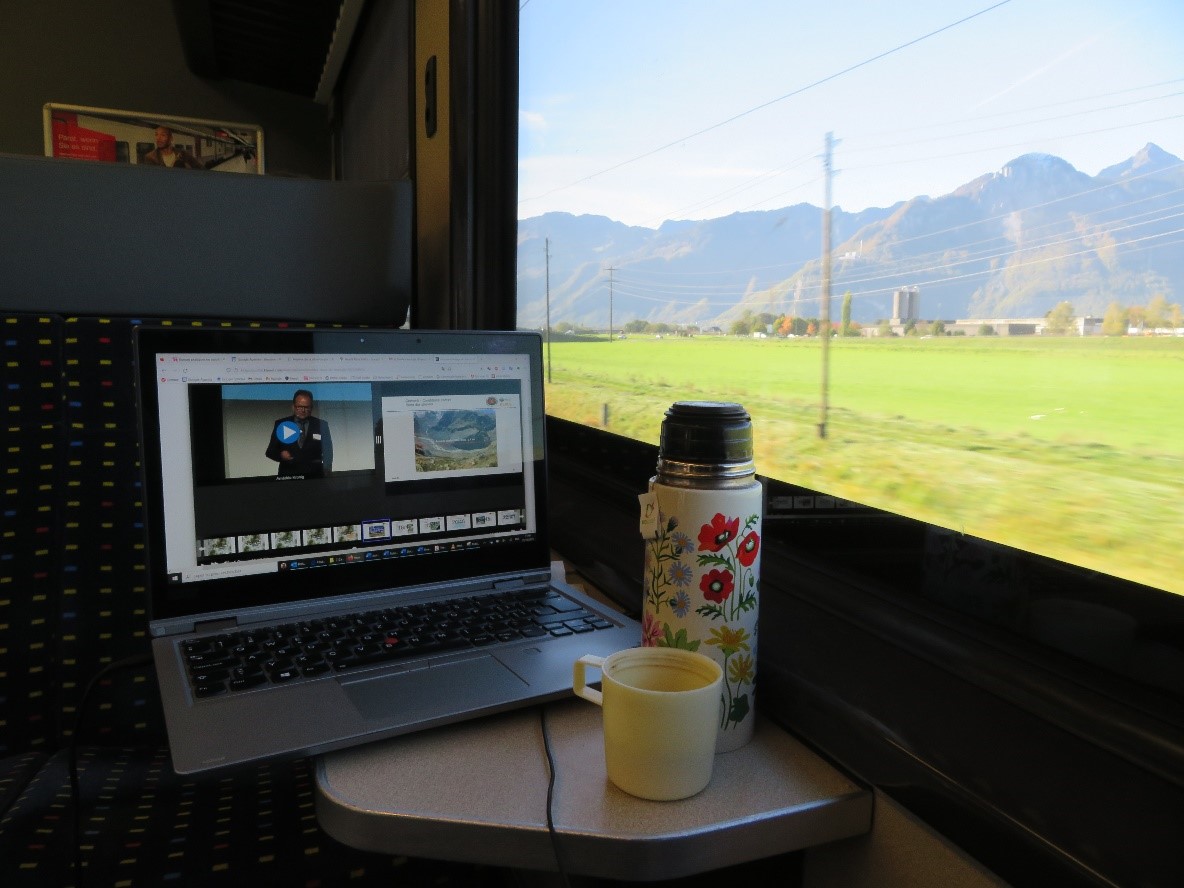
I met my interviewees at their offices, homes, in cafés, restaurants, parks, at the Parliament, in cities and mountains… This involved a lot of time spent on the train which I used to prepare my interviews, write my field notes, and think by looking outside the window (Image source: author)
These interviews were rich and gave me a deeper understanding of the complexity behind post-glacial politics. They also provided me with a valuable entry point to understand actors’ representations of deglaciating areas and how they envision their future usage or non-usage. Given the diversity of actors I chose to interview, I quickly came to realize that I had to adapt my questions and word choices to discuss post-glacial areas. This was a challenge but also gave me valuable insights into the different ways of conceptualizing post-glacial dynamics.

The content and format of my interviews varied a lot based on my interviewees. On the left, an illustration of a story an interviewee told me on his ancestors’ relationship to the Trift glacier. On the right, a geomorphologist explaining to me the genealogy of the Inventory of Alluvial Plains of National Importance with the help of maps (Images source: author)
Diving deeper
I also had the opportunity to participate in several events, protests, visits and conferences during which I engaged with actors on a more informal level and was able to “see for myself” their perspectives and activities.
These firsthand experiences allowed me to make several valuable observations and create connections, however they were also challenging. For example, I found it difficult to clarify my position as a social scientist at protest-visits or conferences when facing the recurring question “So what do you REALLY think, are you pro-dams on new glacial lakes or against them?”. I sometimes failed to find the right position as a participant-researcher but learnt how to manage this strange dichotomy in the course of fieldwork.
The fact that I did (and do) not speak Schwizerdütsch was also an important challenge. If I was not able to understand the content of events held in Schwizerdütsch, I developed several strategies to bypass this problem by hiring a translator, asking for translations from participants, or engaging with one on one side conversations with participants.
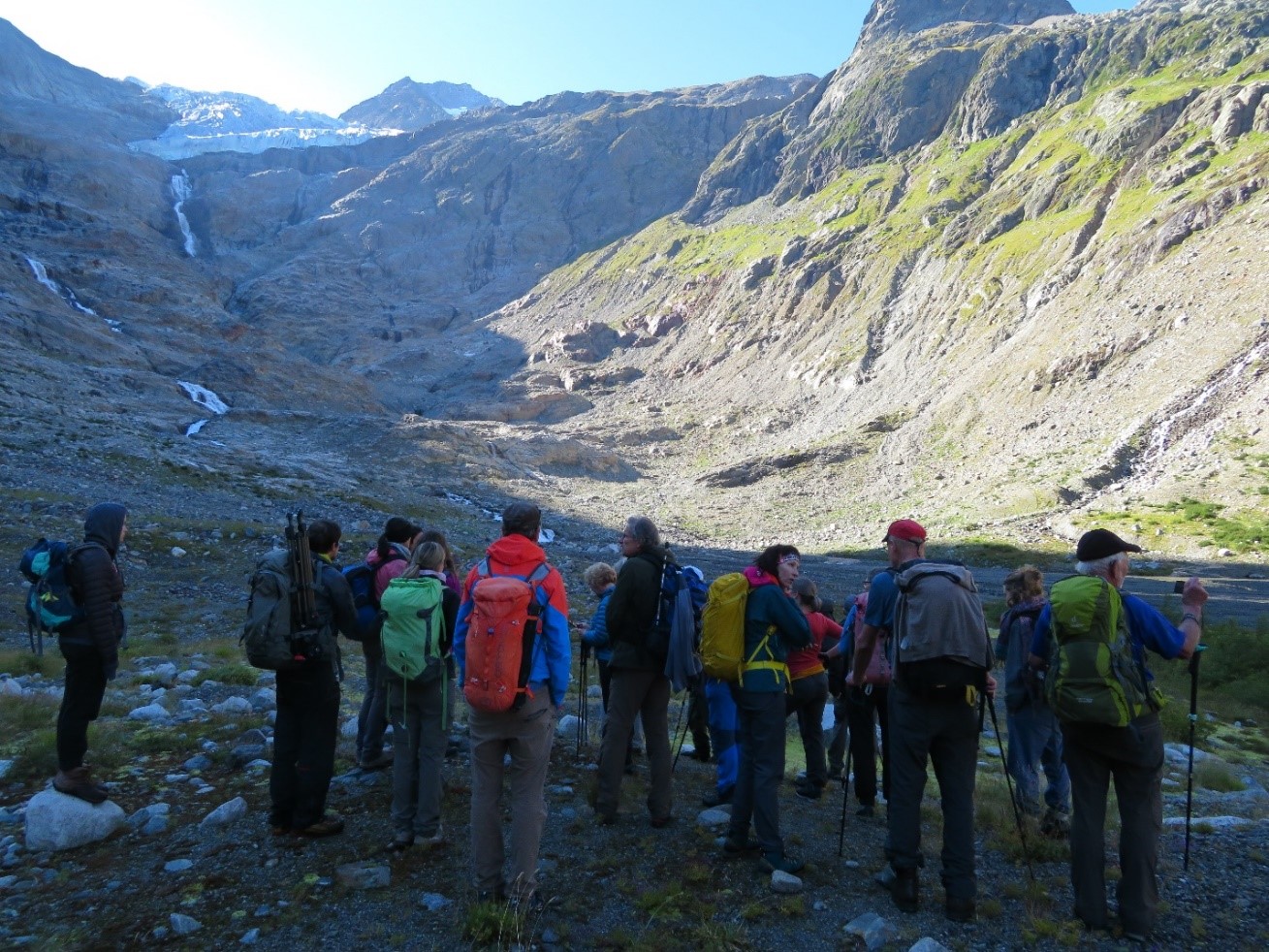
Example of a field visit I took part in at the Trift where a dam on a post-glacial area is planned (Image source: author)
In the current
The Swiss politics of post-glacial areas evolved a lot over the course of my fieldwork. As a result of a national roundtable on hydroelectricity, several large scale hydropower projects on newly deglaciated areas were identified as highly promising. This, amongst other factors, contributed to an increase in the attention paid to post-glacial areas as potential location to expend Switzerland’s energy storage capacity. Future alpine alluvial plains also became a focus point in discussions on the revision on the Energy supply law.
These important contextual evolutions made the topic of post-glacial areas increasingly touchy. As months went by, I noticed that my interviewees where getting cautious about arranging interviews and the information they would choose to share. For example, during one interview a member of the Swiss federal administration working on environmental issues kept on telling me that he could not answer my questions because the topic was too political. Reflexively aware of the situation, he pointed out that his silence was something I should study.
If this change in context was a challenge, it was also an opportunity to notice and experience the structuration of a controversy first hand both through its verbalization and, as this interviewee pointed out, silences.
What’s next?
Most research methodology handbooks recommend stopping interviews upon reaching “data saturation”. Personally, I think that this is a lie. I found that every new interview I conducted contained at least a unique piece of information but had to put an end to my fieldwork due to monetary constraints, transcription time, and dissertation writing objectives.
Currently in the analysis stage of my research project, I am retracing the genealogy of post-glacial politics in Switzerland by using the content of my interviews as well as triangulating them with data from newspapers, policy papers, scientific publications, archives, legal proceedings, and grey literature. I am also in the process of conducting a qualitative content analysis of this material to identify evolving representations of deglaciation as a policy issue. The journey continues!
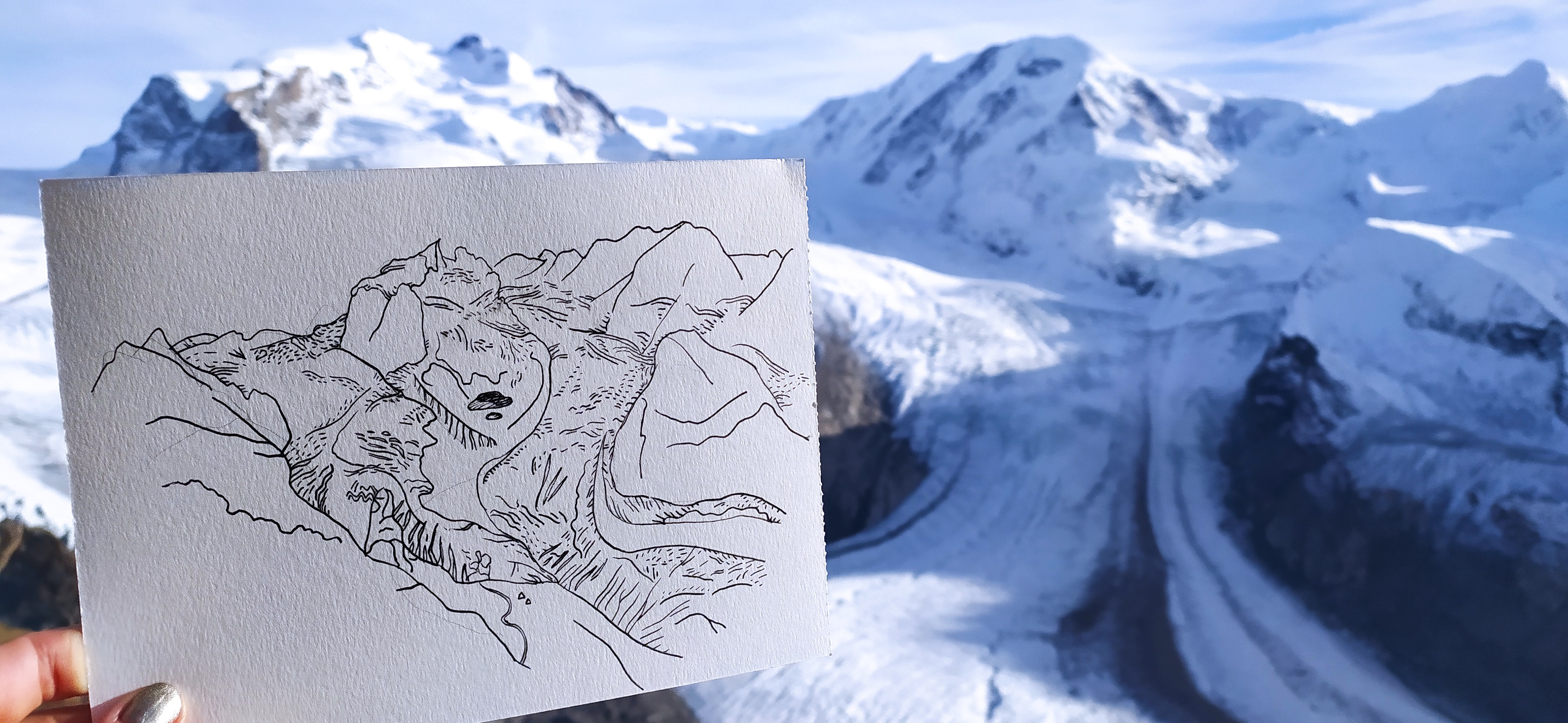 Illustration of the Gorner Glacier (canton Wallis). The Gorner reservoir project is currently the multipurpose hydropower project with the highest energy storage potential in Switzerland under development and discussion (Image source: Author)
Illustration of the Gorner Glacier (canton Wallis). The Gorner reservoir project is currently the multipurpose hydropower project with the highest energy storage potential in Switzerland under development and discussion (Image source: Author)
Want to hear more ?
Chloé also had the opportunity to share more about her fieldwork experience, learnings, and challenges on the GEDT Podcast "The academic journey of a doctoral research". Listen to Episode 3 of the podcast "Fielwork and beyond" to hear more.
7 avril 2023Carnets de recherche
